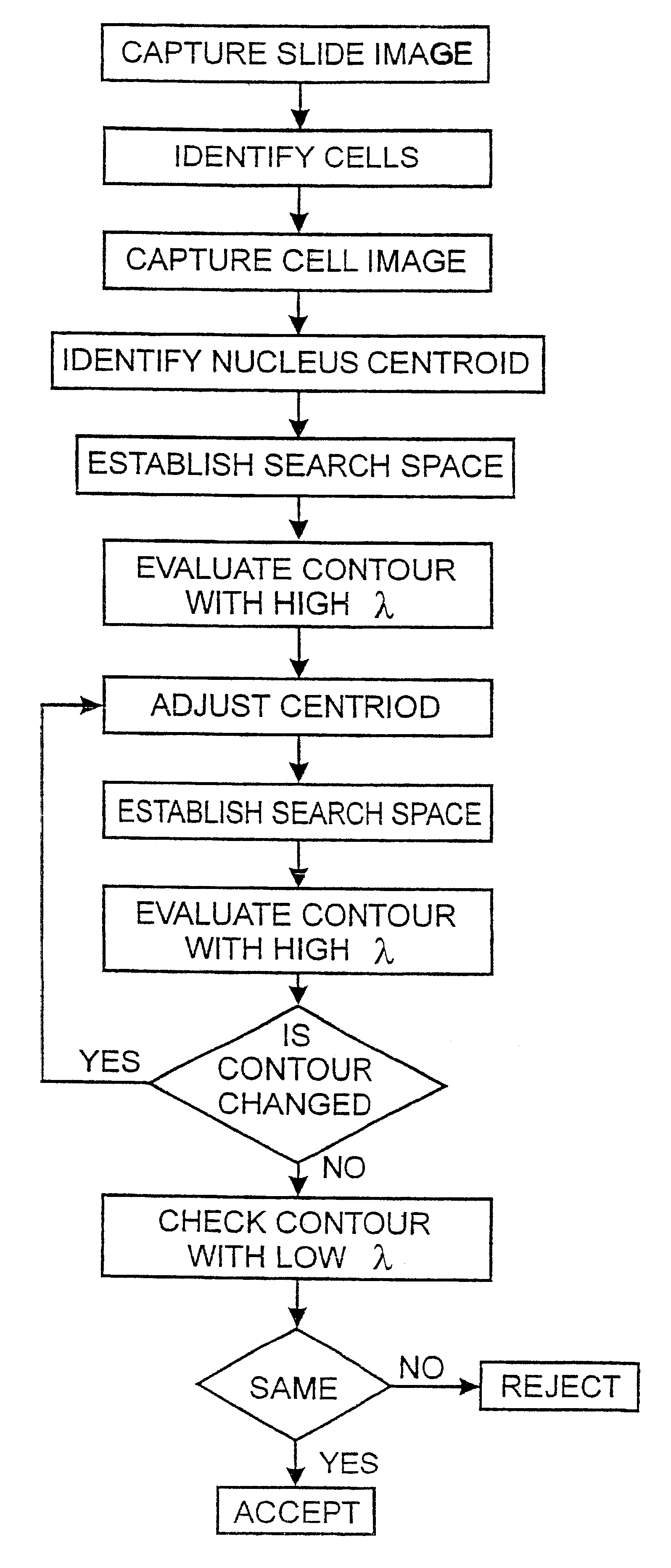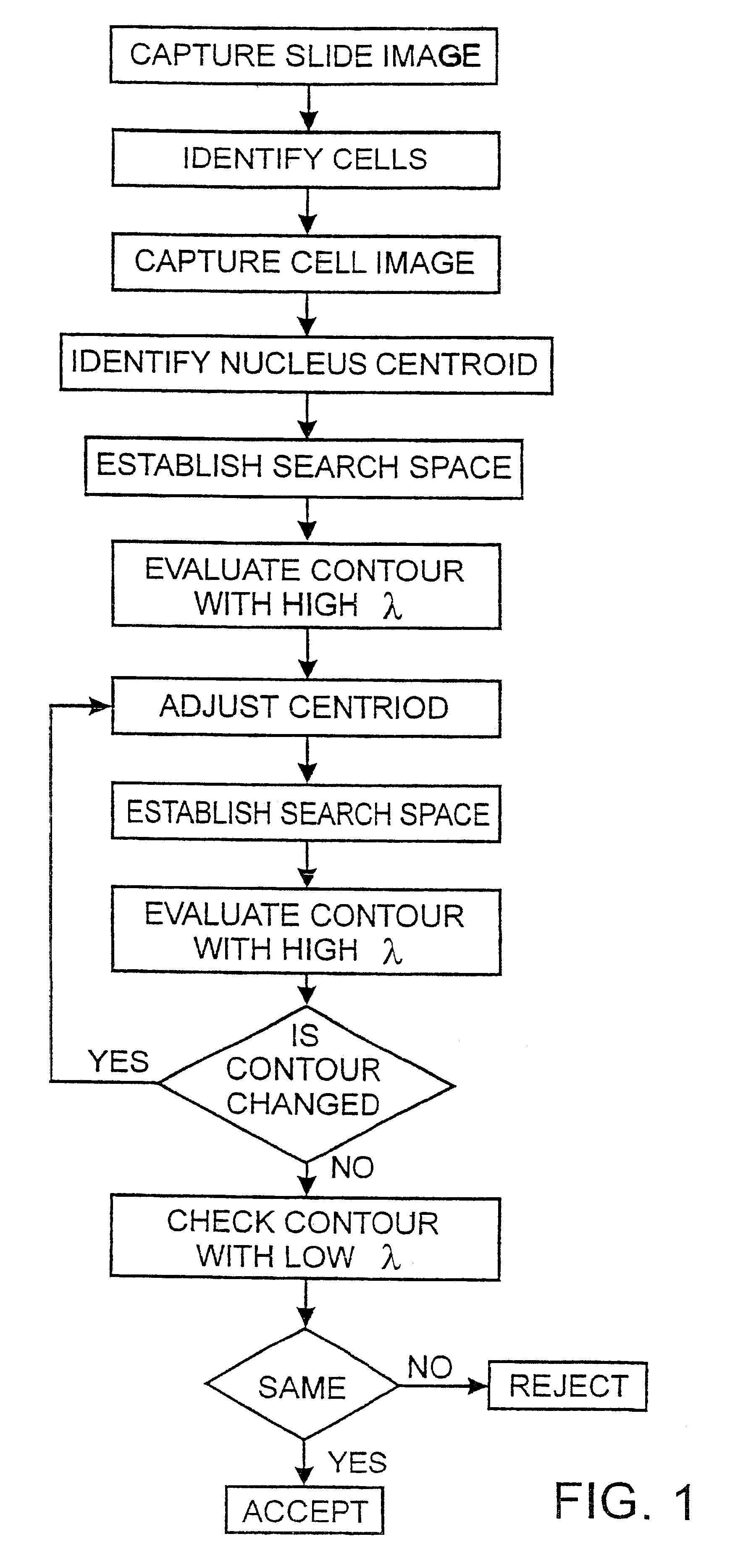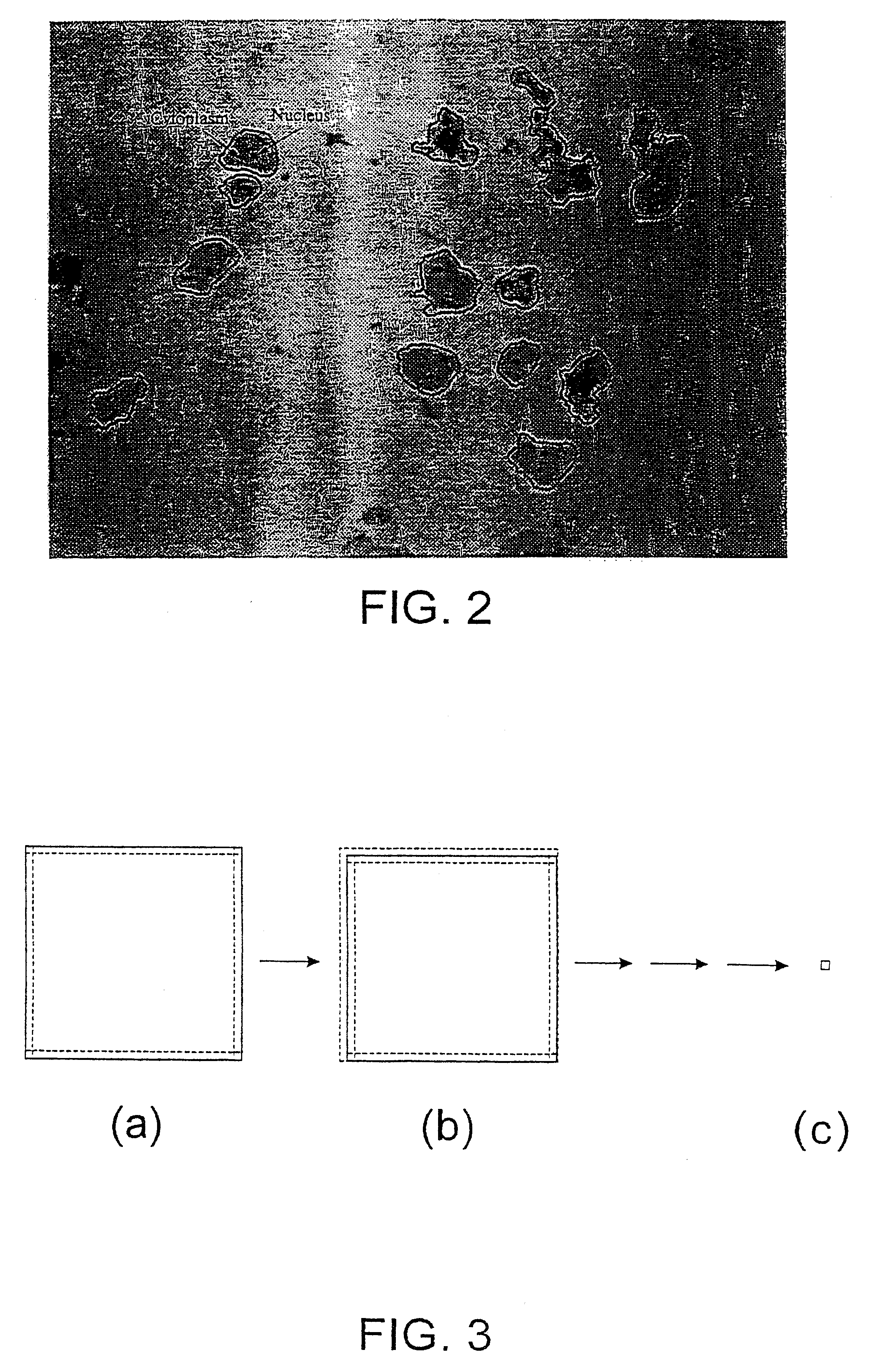Method of unsupervised cell nuclei segmentation
a cell nucleus and cell nucleus technology, applied in the field of unsupervised cell nucleus segmentation, can solve the problems of difficult to achieve high degree of accuracy in very large data sets, false positive and false negative indications cannot be tolerated, and the stain used in the papanicolaou slide preparation process does not produce a strong nucleus-cytoplasm contrast. , to achieve the effect of improving the method of image segmentation
- Summary
- Abstract
- Description
- Claims
- Application Information
AI Technical Summary
Benefits of technology
Problems solved by technology
Method used
Image
Examples
Embodiment Construction
Referring to FIG. 1 there is shown a flow chart of the process for cell nuclei segmentation. The method is described with reference to the preferred embodiment of identifying and segmenting cell nuclei in a pap smear slide. It will be appreciated that the steps may be generalised to apply to any segmentation task where very high confidence levels are required.
Scenes from a cervical smear slide are captured at low resolution using a CCD camera mounted upon a microscope. Locations of the cells within the image are identified using any suitable technique. One technique is to use the `water immersion algorithm` described by Bamford and Lovell [A water immersion algoritm for cytological image segmentation; APRS Image Segmentation Workshop, University of Technology Sydney, Sydney, December 1996, 75-79]. An example of a scene segmented using the water algorithm is shown in FIG. 2.
Once the cells have been identified a high resolution image is taken of each cell for further processing. The i...
PUM
 Login to View More
Login to View More Abstract
Description
Claims
Application Information
 Login to View More
Login to View More - R&D
- Intellectual Property
- Life Sciences
- Materials
- Tech Scout
- Unparalleled Data Quality
- Higher Quality Content
- 60% Fewer Hallucinations
Browse by: Latest US Patents, China's latest patents, Technical Efficacy Thesaurus, Application Domain, Technology Topic, Popular Technical Reports.
© 2025 PatSnap. All rights reserved.Legal|Privacy policy|Modern Slavery Act Transparency Statement|Sitemap|About US| Contact US: help@patsnap.com



